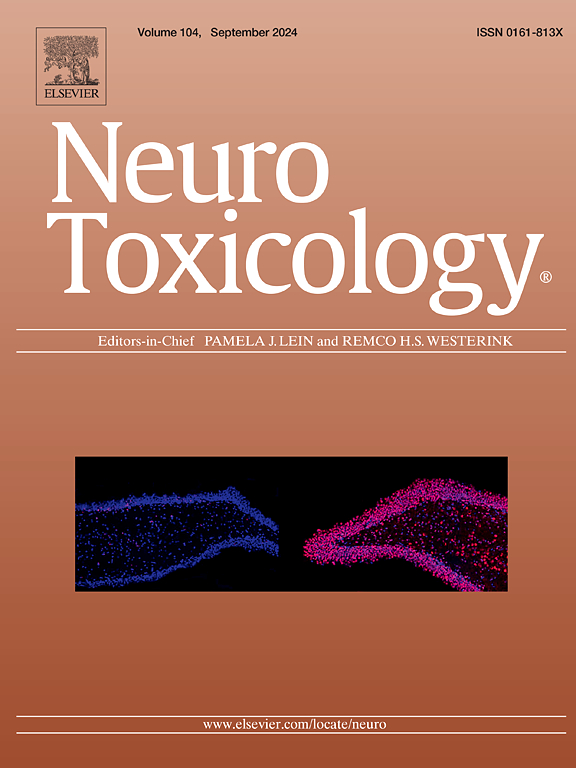Mechanisms of developmental neurotoxicity of Dechlorane Plus, a recently identified persistent organic pollutant: An in silico study
IF 3.9
3区 医学
Q2 NEUROSCIENCES
引用次数: 0
Abstract
Dechlorane Plus (DP), a polychlorinated flame retardant, has recently been recognized as a persistent organic pollutant. In this study, the molecular mechanisms and targets associated with DP-induced developmental neurotoxicity (DNT) in humans were investigated through network toxicology, multi-level bioinformatics approaches, and molecular docking. Through comprehensive database analysis, 32 potential targets associated with DP-induced DNT were identified. Gene Ontology terms enrichment analysis revealed significant enrichment in pathways related to the nervous system processes, GABA-A receptor complex, and various binding and channel activities. KEGG pathway enrichment analysis indicated that DP-induced DNT is mediated through complex interactions involving neuroactive ligand-receptor interaction pathways. Further analysis using GeneMANIA, STRING, Cytoscape tools, and MCODE identified 11 hub targets, including GABRA1, GABRB1, GABRB3, and GABRG2 as key targets. Molecular docking revealed that DP binds to the GABRB3-GABRA1-GABRG2 protein complex to a degree comparable to the control bicuculline, a potent and selective antagonist of the GABA-A receptor. These findings suggest that DP may have antagonistic effects on the GABA-A receptor, potentially increasing neuronal excitability. This study offers valuable insights into the molecular mechanisms underlying DP-induced DNT and provides data for in vitro or in vivo studies.
最近发现的一种持久性有机污染物——十氯烷的发育神经毒性机制:一项硅研究
二氯丙烷(DP)是一种多氯阻燃剂,近年来被认为是一种持久性有机污染物。本研究通过网络毒理学、多层次生物信息学方法和分子对接等方法,探讨了dp诱导的人类发育性神经毒性(DNT)的分子机制和相关靶点。通过综合数据库分析,确定了32个与dp诱导DNT相关的潜在靶点。基因本体术语富集分析显示,与神经系统过程相关的通路、GABA-A受体复合物以及各种结合和通道活性显著富集。KEGG通路富集分析表明,dp诱导的DNT通过神经活性配体-受体相互作用通路的复杂相互作用介导。使用GeneMANIA、STRING、Cytoscape工具和MCODE进一步分析确定了11个hub靶点,包括GABRA1、GABRB1、GABRB3和GABRG2作为关键靶点。分子对接显示,DP与GABRB3-GABRA1-GABRG2蛋白复合物的结合程度与对照双管碱相当,双管碱是GABA-A受体的有效和选择性拮抗剂。这些发现表明,DP可能对GABA-A受体具有拮抗作用,可能增加神经元的兴奋性。该研究为dp诱导DNT的分子机制提供了有价值的见解,并为体外或体内研究提供了数据。
本文章由计算机程序翻译,如有差异,请以英文原文为准。
求助全文
约1分钟内获得全文
求助全文
来源期刊

Neurotoxicology
医学-毒理学
CiteScore
6.80
自引率
5.90%
发文量
161
审稿时长
70 days
期刊介绍:
NeuroToxicology specializes in publishing the best peer-reviewed original research papers dealing with the effects of toxic substances on the nervous system of humans and experimental animals of all ages. The Journal emphasizes papers dealing with the neurotoxic effects of environmentally significant chemical hazards, manufactured drugs and naturally occurring compounds.
 求助内容:
求助内容: 应助结果提醒方式:
应助结果提醒方式:


